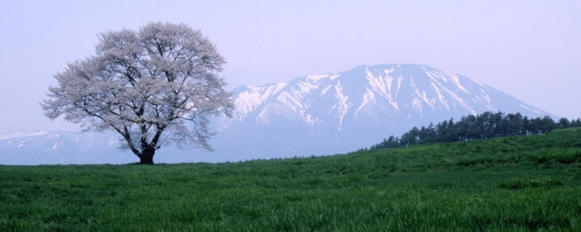
At a glance
Travel to Tohoku (Aomori, Akita, Iwate, Miyagi, Yamagata and Fukushima), Northern part of Honshu-mainland of Japan is designed to fully appreciate unspoiled countryside of Japan. The area is loved by Japanese people for the time-honored scenery and tradition. There are many historical towns with Samurai houses, Sake breweries, important temples as well as splendid nature of volcano lakes, mountains, islands, hot springs and more.
Highlights
Lake Towada, Oirase Gorge, Hakkoda, Shimokita Peninsula (Aomori Prefecture)

Aomori is located in the northernmost part of Tohoku area with a variety of nature.
In the area of Lake Towada and Oirase Gorge, travelers can enjoy hiking along a lake, streams and waterfalls in the forests covered with moss. In Hakkoda area there are some historical hidden hot springs in the highland.
In Shimokita Peninsula, Mount Osorezan considered as one of the three holy sites in Japan, along with Hieizan and Koyasan is believed that dead spirits gather here. In the mystic landscape with a beautiful emerald green lake, red bridge to pass a death river, unique rocks related to Buddhism, many believers ask spiritual mediums itako to communicate with their dead loved ones.
Kakunodate & Tazawako Lake (Akita Prefecture)

Kakunodate is considered as "small Kyoto in Tohoku" with the history of 380 years. The town is built by Yoshikatsu Ashina in 1620. It was an ideal place to create a castle town surrounded by rivers and mountains. Nowadays, you can easily stroll around this historical small town with old Samurai houses and craft shops. In spring, more than 400 weeping cherry trees are in bloom along with Samurai streets.
If you are a nature lover, enjoy a scenic boat ride in Tazawako Lake, the deepest lake of 423 metre in Japan. Then relax at a hot spring ryokan near Tazawako Lake or Nyuto onsen village.
Hiraizumi & Genbikei (Iwate Prefecture)
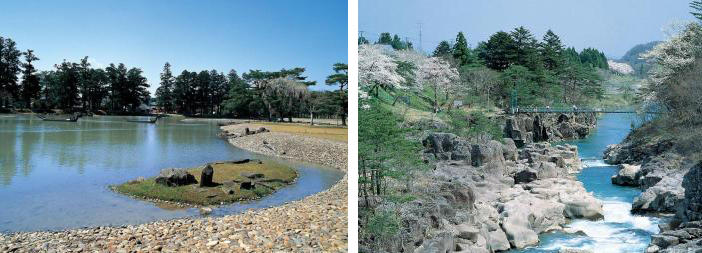
Fujiwara clan established Hiraizumi as a Buddhist utopia with the success of gold mining. In Chusonji temple boasted huge pagodas and halls, and around Motsuji temple, methodically streets were full of merchants. Many large temples purified Hiraizumi town in peace.
Chusonji temple was established in 850, used to have 40 pagodas and more than 300 vihara. Many buildings in Chusonji were burned down, however you can visit Konjikido hall the gold-covered building except roof. You will see how gorgeous Fujiwara era was.
Motsuji temple was established by second and third generation of Fujiwara clan. It used to be a temple as large as Chusonji, however it was burned down. There is a Jodo-style garden inspired by natural scenery in the temple.
Also, visit Genbiki valley, loved as one of the most scenic points in Iwate Prefecture.
Matsushima (Miyagi Prefecture)

Matsushima is considered as one of the three scenic spots in Japan, along with Amanohashidate (Kyoto pref.) and Miyajima (Hiroshima pref.). A Japanese poet Basho Matsuo was amazed at the scenery of 260 small island in Matsushima Bay and was loss for words. You will enjoy the nature and historical architectures of temples and shrines around the cove by walk and scenic boat ride.
Zuiganji temple, the oldest Zen temple in Tohoku was established by Masamune Date, the strongest Samurai in this area. In the vast area, there are the remains of cave to pray for dead spirits in Matsushima in old days. Zuiganji is considered as the oldest Zen temple in Tohoku.
Also, Matsushima is one of the largest production centers of oysters in winter. Travelers can enjoy freshly grilled oysters on the streets in season.
Yamadera & Zao (Yamagata Prefecture)

Yamadera temple was established in 860 as one of the holy grounds in Tohoku. It is hanging on the cliff of the mountains. Take a hike to the main hall of temple with a spectacular view of mountains and villages. Please wear walking shoes ready for the 800 treads of stairs.
Zao is considered as one of the best ski resorts in Japan. A scenic drive will take you to a crater lake called Okama meaning "rice "kettle." The lake shows different colors depending on the time and weather, considered as "Five coloured lake." The altitude of Okama is about 1700 meter and you can easily walk to the scenic point.
Aizu (Fukushima Prefecture)

Aizu area still keeps the time-honored scenery and tradition that Japan used to be. On the streets in Aizu Wakamatsu city and Kitakata city, there are historical storehouses, sake breweries, local wooden craft shops, and more. Thanks to the abundant pure water from the springs and melted runoffs, Aizu produces award-winning sake, rice, soba(buckwheat) every year.
In south part of Aizu, there are small villages with thatched-roof houses. Friendly village people and the scenery remind of the old days in Japan.
"Onsen" Hot springs in Tohoku

Tohoku is one of the most popular hot spring destinations among Onsen lovers. With a variety of hot spring colors with strong minerals, many hot springs in Tohoku has milky, golden, green, blue colors, which is said to have healing and health promoting properties. Soak yourself in the pure hot springs and release your stress from your work.
Access
There are a variety of approaches to this area. Typical routes are as follows:
From Tokyo
- Tokyo - [2 hr. 30 min. by bullet train & local train] - Matsushima or Yamadera
- Tokyo - [3 hr. 30 min. by bullet train & taxi] - Zao
- Tokyo - [4 hr. by bullet train] - Kakunodate
- Tokyo - [3 hr. by bullet train & local train] - Hiraizumi
Recommended Accommodations
These are a few hotels that we recommend. We can book other ryokans or hotels depending on your travel plan or budget. Please contact us by E-mail (commentsmtj@michitravel.com) or phone (81-3-523-5040).
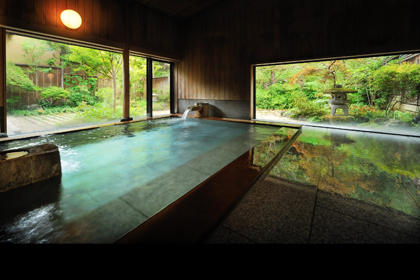 Meigetsuso (Yamagata)
Meigetsuso (Yamagata)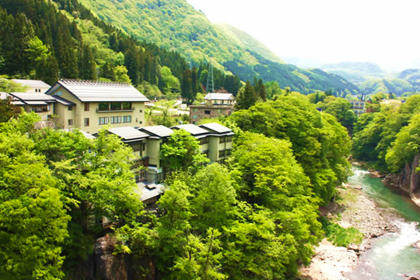 Toryukan (Aizu)
Toryukan (Aizu)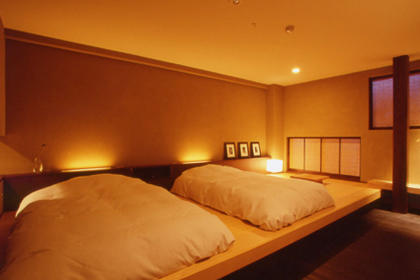 Yudonoan (Yamagata)
Yudonoan (Yamagata)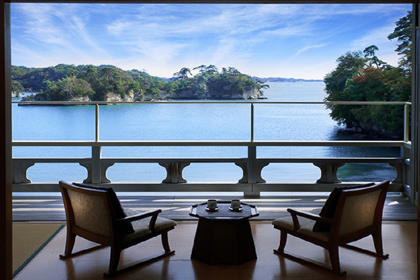 Shoan (Matsushima)
Shoan (Matsushima)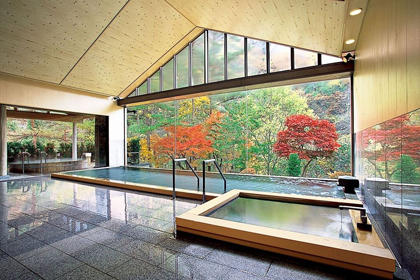 Kashoen (Iwate)
Kashoen (Iwate)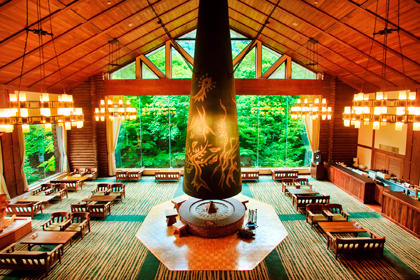 Oirase Keiryu Hotel (Aomori)
Oirase Keiryu Hotel (Aomori)